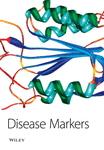Serum Cystatin C Is a Determinant of Paraoxonase Activity in Hemodialyzed and Renal Transplanted Patients
Abstract
Background: Human paraoxonase-1 (PON1) inhibits LDL-oxidation and atherogenesis, and possesses lactonase activity. Decreased PON1 activity was found in hemodialyzed and renal transplanted patients. Cystatin C plays a protective role in atherosclerosis, and is a new, sensitive marker of renal function. The relationship between these two markers in renal failure has not been investigated.
Aims: The goal of this study was to clarify the relationship between PON1 activity, cystatin C and homocysteine in chronic renal failure. We also determined the levels of oxidatively modified LDL (oxLDL) and thiobarbituric acid reactive substances (TBARS) to characterize lipid peroxidation.
Patients and methods: 74 hemodialized (HD), 171 renal transplanted patients (TRX), and 110 healthy controls (C) were involved in the study. PON1 activity and TBARS levels were measured spectrophotometrically. OxLDL level was determined with sandwich ELISA.
Results: There was a negative correlation between PON1 activity and cystatin C level. Homocysteine level correlated negatively with PON1 activity, and positively with cystatin C level. OxLDL and TBARS levels were significantly higher in the HD and TRX groups compared to C.
Conclusions: Cystatin C may be a good predictive factor not only for homocysteine levels but for the antioxidant status in patients with renal failure and renal transplantation.




